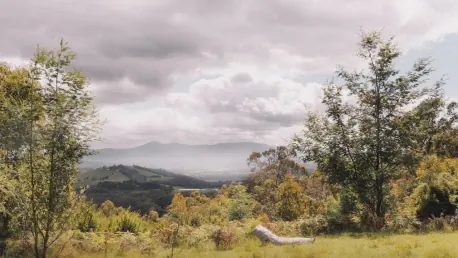Gardening serves as a bridge between humans and nature, but the pursuit of a picturesque, meticulously maintained garden often stands in contrast to the unstructured, vibrant realm that nature thrives in. The endeavor to harmonize these two worlds has led to an increasing interest in meadowscaping—a gardening method that emphasizes the cultivation of native plants to foster biodiversity and establish wildlife habitats. Unlike traditional gardens that prioritize manicured lawns and exotic plant species, meadowscaping adopts a naturalistic approach, aiming to support local ecosystems with minimal upkeep. This method not only reduces maintenance efforts but also nurtures the environment by attracting and sustaining diverse local wildlife.
Embracing Native Plants and Sustainability
Meadowscaping focuses on integrating native plants that are well-adapted to the local climate, soil, and ecosystems. John Wilson from Go Lightly Landscape Architecture emphasizes that native plants are crucial because they offer natural habitats and food sources for pollinators, birds, and other wildlife. For instance, wildflowers, ornamental grasses, pollinator-friendly perennials, and clover can replace traditional grass lawns, providing a more sustainable and ecologically beneficial landscape. This practice inherently supports rainfall retention and reduces soil temperature, contributing to a healthier ecosystem.
To begin meadowscaping, it is essential to conduct thorough research on the native plants that will thrive in specific areas. Gardeners are advised to avoid generic “meadow” seed mixes from commercial garden centers, as these often contain non-native species that may not be sustainable in the local environment. Instead, seeking information from local botanic gardens, Native Plant Societies, or university extensions can provide valuable insights into suitable plant varieties. Kate Spirgen, affiliated with Proven Winners, suggests starting with young perennials and annual wildflowers, noting that perennials may take up to three years to bloom fully but will ultimately support long-term biodiversity.
Practical Considerations for Meadowscaping
Implementing meadowscaping requires some practical considerations, particularly ensuring that the garden location receives ample sunlight—at least six hours daily. It is also prudent to check local regulations or Homeowners Association (HOA) guidelines on lawn aesthetics to prevent potential conflicts. In areas where regulations are stringent, strategically placing educational signage that explains the ecological benefits of meadowscaping can help gain neighbors’ understanding and support for the initiative.
For those who may be apprehensive about a complete garden transformation, integrating meadowscaping elements incrementally can be an effective strategy. Choosing a specific area such as a difficult-to-mow spot or regions surrounding garden focal points like ponds and bird baths can slowly introduce the meadow-like aesthetic. Garden containers can also serve as a starting point. Stephanie Green, an expert in container gardening, recommends incorporating a mix of plants such as boxwood, dwarf grasses, heuchera, gaura, and echinacea in containers, which can mimic the appearance and benefits of a meadow within a compact space.
The Benefits of Meadowscaping
The primary benefit of meadowscaping lies in its ability to create a garden habitat that is not only visually vibrant but also ecologically advantageous. By supporting an array of native plants, gardeners can significantly boost local biodiversity. This approach results in a garden that is richer in pollinators such as bees and butterflies, along with a diverse range of bird species, offering essential ecosystem services such as pollination and pest control. Moreover, the reduced need for frequent mowing, fertilizer, and pesticide use lowers gardening maintenance costs and labor while minimizing harmful environmental impacts.
Meadowscaping also aligns with the growing sustainability movement, as it encourages land stewardship and conservation practices. By opting for native plants, gardeners are actively contributing to the preservation of local flora and fauna, countering the adverse effects of habitat destruction and climate change. The aesthetic appeal of a meadowscaped garden—characterized by its natural beauty and seasonal variations—offers a refreshing departure from the uniformity of traditional garden designs, providing an ever-changing landscape that reflects the rhythms of the natural world.
Looking Ahead
Gardening bridges the gap between humans and nature, yet the quest for a picture-perfect, meticulously kept garden contrasts sharply with the wild, vibrant sphere where nature flourishes. This tension has sparked interest in meadowscaping—a gardening approach that prioritizes native plants to promote biodiversity and create wildlife habitats. Unlike traditional gardens, which focus on manicured lawns and exotic plant species, meadowscaping embraces a naturalistic style designed to support local ecosystems with minimal effort. This method significantly reduces maintenance while nourishing the environment by attracting and sustaining diverse local wildlife. Meadowscaping encourages the growth of native flora, which in turn invites pollinators, birds, and other wildlife, contributing to a balanced and dynamic ecosystem. Adopting meadowscaping can transform a garden into a thriving sanctuary for life and a reflection of the natural world, offering a textured, vibrant beauty that aligns closely with nature’s own.









